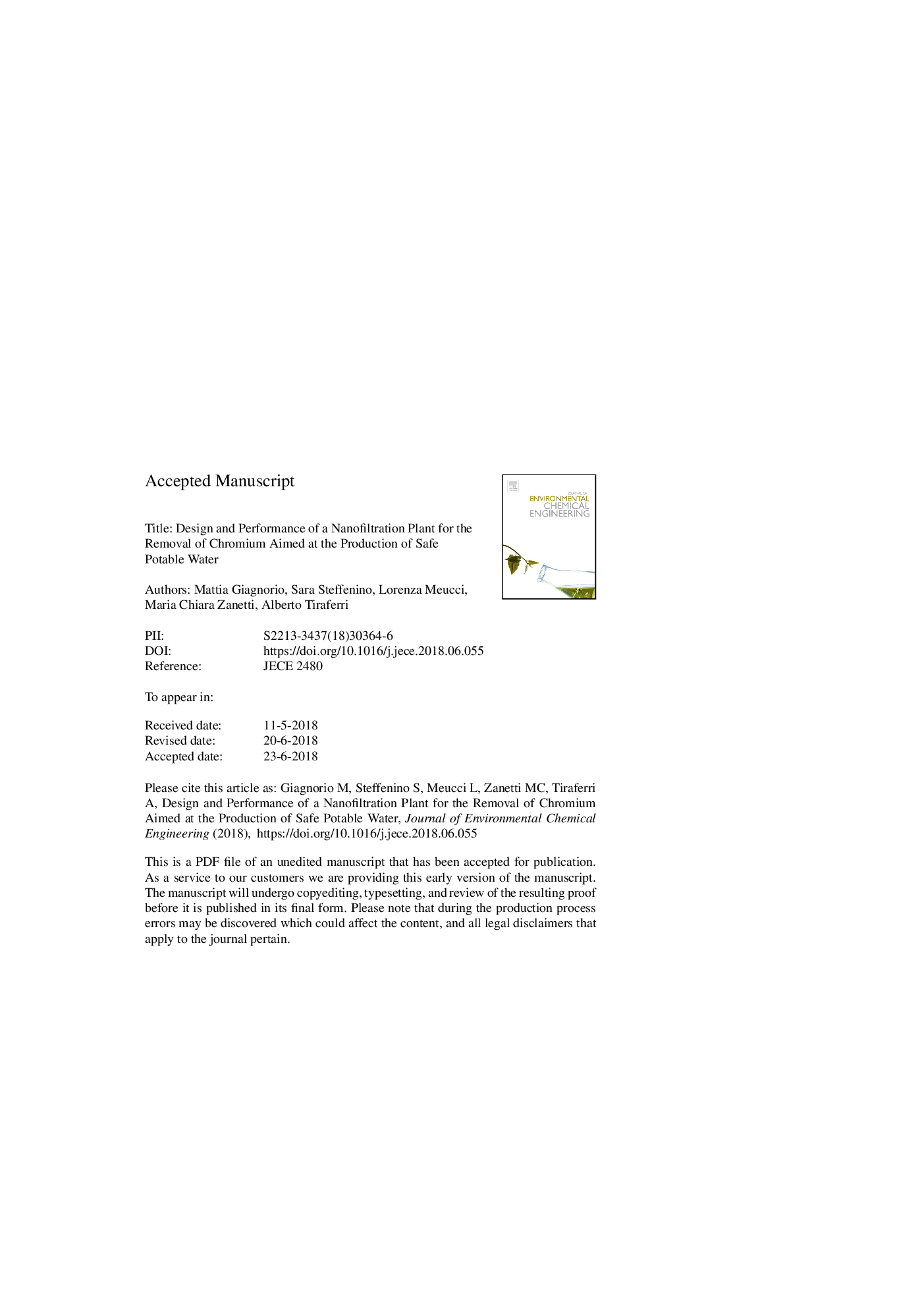| Article ID | Journal | Published Year | Pages | File Type |
|---|---|---|---|---|
| 6663899 | Journal of Environmental Chemical Engineering | 2018 | 28 Pages |
Abstract
Nanofiltration is an emerging technology applied to increase the availability of safe drinking water. This study evaluates nanofiltration as a feasible process to reach the new regulatory concentration limit for hexavalent chromium (0.01â¯mg/L) in potable water. Real well water contaminated with chromium was treated using two types of membranes of different selectivity in bench-scale and pilot-scale experiments. The pilot system comprised two modules in series and was run for 42 days without chemical cleaning, at an applied pressure of < 6â¯bar. A flux decline of around 20% of the initial value was observed with both membrane types. Observed rejection was constant (> 98%) for the denser membrane, while it decreased from 95% to 70% for the less selective membrane. This result may be attributed to the impairment of charge-based rejection of chromate ions. Based on these results, a full-scale plant is proposed to treat the contaminated well water, equipped with the more selective membranes. The optimal plant configuration would consist of two stages, with a total number of 96 modules to produce 30â¯L/s of potable water. Based on equations developed to describe contaminant concentrations in the streams entering and exiting a generic plant, guidelines are also provided to perform a preliminary system analysis. An economic assessment showed an average cost of <0.3 ⬠per cubic meter of product water considering both capital and operational costs, for a plant lifetime of 10 years. From an environmental perspective, power supply would be the most impactful item of the plant.
Related Topics
Physical Sciences and Engineering
Chemical Engineering
Chemical Engineering (General)
Authors
Mattia Giagnorio, Sara Steffenino, Lorenza Meucci, Maria Chiara Zanetti, Alberto Tiraferri,
